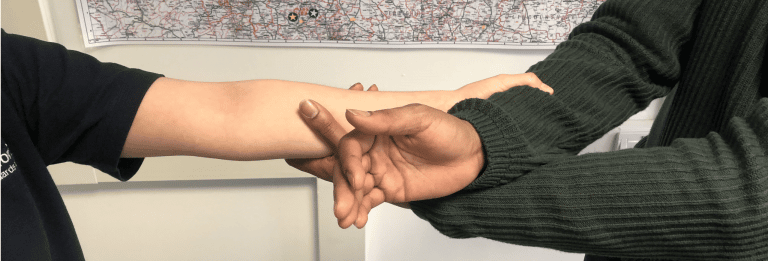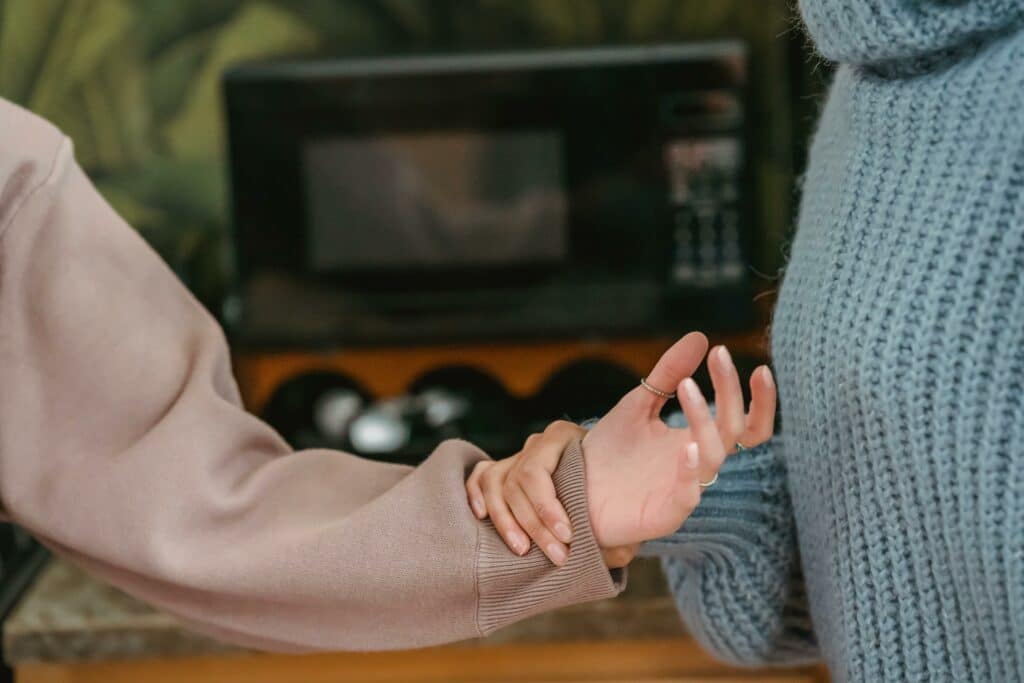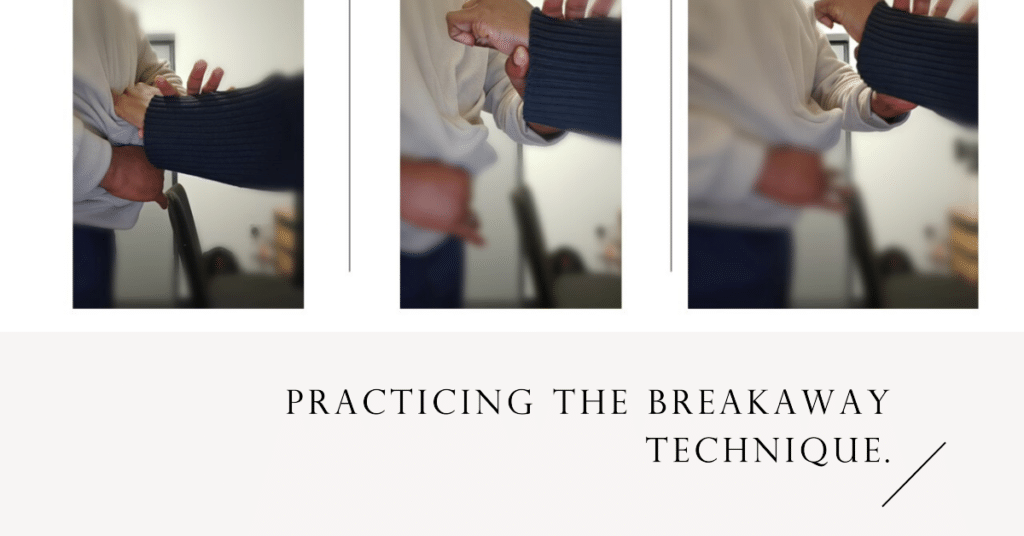What is breakaway training?
Whether you’re looking to enhance your self-defense skills, gain confidence in handling conflict, or simply develop a resilient mindset, breakaway training is the key to unlocking your full potential.
Picture this: You’re a dedicated care worker, passionately providing support and assistance to those in need. Your days are filled with moments of compassion and connection, but in the midst of it all, unexpected situations can arise.
One day, while attending to a client, you find yourself in a tense and potentially dangerous situation. The ability to breakaway swiftly and safely becomes paramount.
Breakaway training equips you with the skills and confidence to handle such challenging scenarios, ensuring the safety of both yourself and those in your care.
This blog post delves into the importance of breakaway training, exploring real-life scenarios and practical strategies that can make all the difference in critical moments.
Table of contents
What is breakaway training?
In any line of work, there comes a time when confrontation is inevitable. Most of the time this manifests itself verbally. Sometimes, however, physical confrontations can arise.

Some sectors, in particular the care sector, are more prone to physical confrontations and no matter how hard you try to resolve problematic issues, threatening behaviour is unavoidable.
Breakaway training aims to deal with these threatening situations by teaching the delegate the correct procedures for protecting themselves and those around them
It’s very similar to self-defence in the way that it teaches protection and break away techniques in circumstances of aggression and physical assault.
This is vital for anyone working in a care environment, as patients can sometimes be physically aggressive due to behavioural issues.
Importantly, break away training demonstrates how to cope with physically aggressive behaviour in relation to your duty of care.
The remainder of this article aims to answer the question “what is break away training” and to give helpful advice.
JOIN OUR BREAKAWAY TRAINING
Learn effective techniques for managing aggression and escaping dangerous situations. Individuals gain confidence and self-awareness to reduce harm.

Why is breakaway training important
Breakaway training is important for two main reasons.
Firstly, It teaches you to protect yourself and others from physical attacks.
Other people who could be in danger are patients, members of staff, visitors or the general public.
Aside from learning how to protect yourself and others, breakaway training teaches key points in law, in particular, health and safety legislation.
Is breakaway training for me?
As mentioned before, confrontation in the workplace is inevitable and although we hope you never have to utilise your breakaway training in the workplace, having it as a skill is vital should a situation ever occur.
As a carer, it is your responsibility to look after those who are vulnerable and less able than yourself and breakaway training facilitates this to some extent.
Physical attacks can occur in a variety of situations such as whilst standing, sitting behind a desk, lying down or in a car.
The point is that by learning how to deal with attacks in different situations you can effectively resolve the issue.
FACE TO FACE BREAKAWAY COURSE
Breakaway training is important for people in jobs where they might face angry or violent situations.

Warning signs and danger signs
With breakaway training, it’s important to be aware of warning signs and danger signs, so let’s take a look at the difference between the two.
When warning signs manifest it might be possible to intervene and attempt to resolve the situation.
However, with danger signs, it is recommended that you leave and pursue help from security staff or the police. Below is a list of both warning and danger signs.
Warning signs
- Direct, prolonged eye contact
- Standing tall
- Exaggerated movements
- Breathing rate increases
- Quick movements
- Shifting weight from one foot to the other
Danger signs
- Fist clenching
- Lips tighten over teeth
- Hands rise above the waist
- Shoulders tense
- Stance moves from square to sideways
- Facial colour may pale
- Fist clenching
- Lips tighten over teeth
- Hands rise above the waist
- Shoulders tense
- Stance moves from square to sideways
- Facial colour may pale
BREAKAWAY TRAINING FOR CARE HOMES
Breakaway training plays a vital role in promoting safety, confidence, and well-being for individuals working in high-risk environments.

What are breakaway techniques?
Breakaway techniques refer to a set of skills and strategies used to safely and effectively disengage from physical confrontations or aggressive situations.
These techniques are designed to help individuals protect themselves and create distance from an attacker or potential threat.
They often involve techniques such as blocking, redirecting, and evading physical contact while maintaining control and ensuring personal safety. The specific techniques taught in breakaway training may vary depending on the training program and the context in which they are applied.
Breakaway techniques are a set of physical maneuvers and strategies that are taught in breakaway training to help individuals safely disengage from a physical confrontation or an aggressive situation.

Common Breakaway Techniques to know
Some common breakaway techniques include:
- Joint locks and holds
- Escaping from grabs and holds
- Redirecting and deflecting attacks
- Creating distance and creating an opportunity to flee or seek help
- Using verbal commands and assertiveness to de-escalate the situation
- Utilizing defensive stances and body positioning to protect oneself
It is important to note that breakaway techniques should only be used as a last resort and in situations where personal safety is at risk.
Proper training and practice under the guidance of qualified instructors are essential to ensure effective and safe application of breakaway techniques.
What Are Breakaway, Maybo, Restrain, and PMVA? Exploring Safety and Conflict Management Techniques
- Breakaway: Breakaway is a technique that helps people get free from things that may hold them back or make them unsafe. It’s like having a special way to remove restraints or clothing quickly and safely in emergencies.
- Maybo: Maybo is a training program that teaches people how to handle difficult situations and prevent violence. They learn ways to calm down and defuse tense situations without using force.
- Restrain: Restrain means to physically hold or limit someone’s movement to keep them or others safe. It’s used in places like hospitals or schools, but it should only be done when necessary and following strict rules.
- PMVA (Prevention and Management of Violence and Aggression): PMVA is a way to prevent and handle situations where someone is being aggressive or violent. It focuses on teaching techniques to prevent such situations and encourages non-physical approaches like communication and understanding. Physical interventions are used only when absolutely needed.
These terms are all about helping people stay safe and manage challenging situations by using the right techniques and strategies. It’s important to handle conflicts peacefully and make sure everyone feels secure.
Our breakaway training course
Here at Caring for Care, we offer you a breakaway training course as well as more advanced one day or two-day advanced courses.
It covers subjects such as legal frameworks, understand the causes and build-up of an attack, actions to avoid being restrained or attacked, safely disengage from being held, safely disengage another person from being held, avoid and defend kicks and punches, post-incident actions and record keeping and de-briefing.
Additionally, the content is 100% bespoke and tailored to your business needs and requirements.
Click here to view our breakaway training course page.
If our breakaway training sounds interesting, please do not hesitate to contact us on 01782 563333.
References
Youtube – https://www.youtube.com/watch?v=JF4ydnQ9iW4
Also Read: What is PMVA and Know the difference between PMVA and Breakaway training.
Let us Help you
We’ll help you find the right course for your needs. Tell us a little bit about your situation and what you would like to achieve.
We’ll get back to you within one working day.
